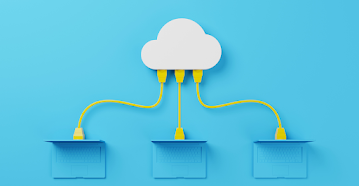Cloud Computing and its various aspects
Cloud Computing
Currently, over 90% of the organizations in the world are using cloud computing services to host their business infrastructure. The entire infrastructure set up is provided over the internet by a remote data center provided by a cloud service provider. The cloud infra requirements works on a consumption based pay-as-you-go model, organizations pay for the cloud services they use and not for comprehensive services all at once.
The most common daily use examples of cloud computing is Google photos, Google drive, Gmail, Amazon Prime, Microsoft OneDrive, etc.
Let’s dive deep into various aspects of cloud computing.
Advantages of Cloud Computing:
Compared to the traditional IT infra set up, cloud computing offers various advantages. These are:
Lower IT Cost: Organizations adopting cloud infrastructure are free of cost and effort of purchasing, installing, configuring, and managing the on-prem infrastructure.
Improve agility and time to value: With cloud, one can easily get access to enterprise applications in minutes instead of traditional approach of requesting, purchasing, and configuring supporting hardware and installing the related software model.
Scale more easily and cost effectively: Cloud also lets you scale your application infra requirements as per the traffic. One can easily scale up during peak season and rid off the extra set up during slow season.
Global Reach: With cloud, organizations are able to launch and manage their applications to other part of the world without any hassle.
Virtualization lets organization realize maximum use of their data center resources. With this comes maximum utilization and cost saving vs. traditional IT infrastructure.
Types of Cloud Computing
There are mainly three types of cloud computing and most of the organizations are using all three of them.
Cloud Computing Services
Cloud Computing Services are mainly of three types:
SaaS (Software-as-a-Service): SaaS is an application software that is hosted in cloud and that users access via web browser, a dedicated desktop client, or an API that integrates with a desktop or mobile operating system. It is the primary delivery model for most of the commercial software products. For example, Adobe Photoshop, Swiggy, Zomato, Flipkart, etc.
PaaS (Platform-as-a-Service): In PaaS model, the cloud provider hosts everything - server, network, storage, operating system software, middleware, database at their data center. Developers simply use the services and environment they need to run, build, test, deploy, maintain, update, and scale the applications. These days, PaaS applications are often built around Containers, a virtualized compute model.
IaaS (Infrastructure-as-a-Service): IaaS was the most popular computing model in 2010 but with time, it faded due to emergence of PaaS and SaaS model. It provides on-demand access to fundamental computing resources - physical and virtual servers, networking, storage over the internet. As compared to SaaS and PaaS, IaaS provides the users with the lowest level control of computing resources in the cloud.
Author: Swati Mishra




Comments
Post a Comment